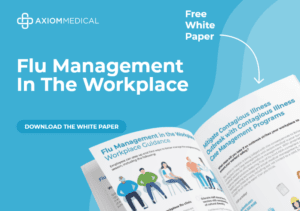What is technology for, if not to save lives? Artificial Intelligence is a game-changer when it comes to real-time awareness, predictive insights, and proactive prevention.
By analyzing massive datasets — equipment logs, worker health data, environmental conditions — AI tools highlight hidden risks before they escalate.
From AI-powered hazard detection to predictive analytics that spot risks before they happen, here’s how technology is completely reshaping the way we think about workplace safety.
AI Takes Predictive Safety to the Next Level
By analyzing everything from machine performance to environmental data and even employee health trends, AI systems can identify emerging patterns humans might miss before it’s too late. The result? Companies can prevent more accidents, reduce costs, and build trust with workers who know their well-being truly comes first.
5 Ways Artificial Intelligence is Transforming Workplace Safety
1. Predictive Analytics That Catch Problems Early
Artificial Intelligence can use historical data to find risks before they become emergencies. It can flag equipment that’s likely to fail, identify high-risk job roles, or even forecast fatigue-related incidents.
Instead of reacting to incidents after the fact, organizations can step in early — preventing accidents and strengthening overall safety culture.
2. Real-Time Hazard Detection
Computer vision and neural network sensors can continuously monitor worksites for unsafe conditions — from improper PPE use to risky movements that could lead to injury. These tools act as an extra set of eyes, spotting what humans might miss in fast-moving environments.
With instant alerts, safety managers can address potential hazards on the spot and keep the small problems small.
3. Wearables That Watch Out for Workers
AI-powered wearables — like smart helmets, vests, and wristbands — are making personalized safety possible. These devices can monitor heart rate, posture, body temperature, and fatigue, even sending alerts when readings suggest strain or overexertion.
By catching warning signs early, teams can prevent minor discomfort or dehydration from turning into a medical emergency.
4. Smarter Reporting and Compliance
Artificial Intelligence can take the grind out of compliance and documentation. Using natural language processing (NLP), it can draft inspection summaries, categorize incident data, and automatically generate OSHA-compliant reports.
This automation saves time, reduces paperwork errors, and helps safety professionals focus on what matters most — preventing the next incident rather than documenting the last one.
5. Immersive Training Powered by Machine Learning
Boring training materials that don’t retain employees’ attention can have real safety consequences. With AI-powered virtual and augmented reality (VR/AR), workers can safely practice emergency scenarios — like chemical spills, fires, or machinery malfunctions — in engaging and fully interactive environments.
This kind of hands-on learning improves retention, boosts confidence, and allows safety teams to measure effectiveness in real time.
What to Watch Out for When Applying Machine Intelligence to Workplace Safety
Artificial Intelligence, just like safety, isn’t plug-and-play. Like all other tools, it comes with a few challenges:
- Artificial intelligence is only as good as the data it learns from. Incomplete, inconsistent, or inaccurate safety records can lead to unreliable insights.
- Cognitive computing systems and sensors require ongoing calibration, updates, and technical support.
- Machine learning should support, not replace, human judgment. If workers or managers defer entirely to algorithms, they may miss contextual nuances that machines can’t interpret — like cultural factors or emotional cues.
Despite these caveats, machine learning tools, when handled thoughtfully, show real promise in reducing workplace accidents.
Explore the Future of Workplace Safety with Us
Want to learn more about leveraging Artificial Intelligence in your safety program? Come contribute to our interactive webinar AI in Safety: Streamlining Your Responsibilities Effortlessly, with Dr. Scott Cherry and our special guest, Esteban Bayro-Kaiser, who has a PhD in machine intelligence and is founder & CEO of WearHealth in Bremen, Germany, and Frontline Strategist at FLX, Calvin Titus. With a guest-list like that, it’s sure to be an invigorating session. Don’t miss out!










